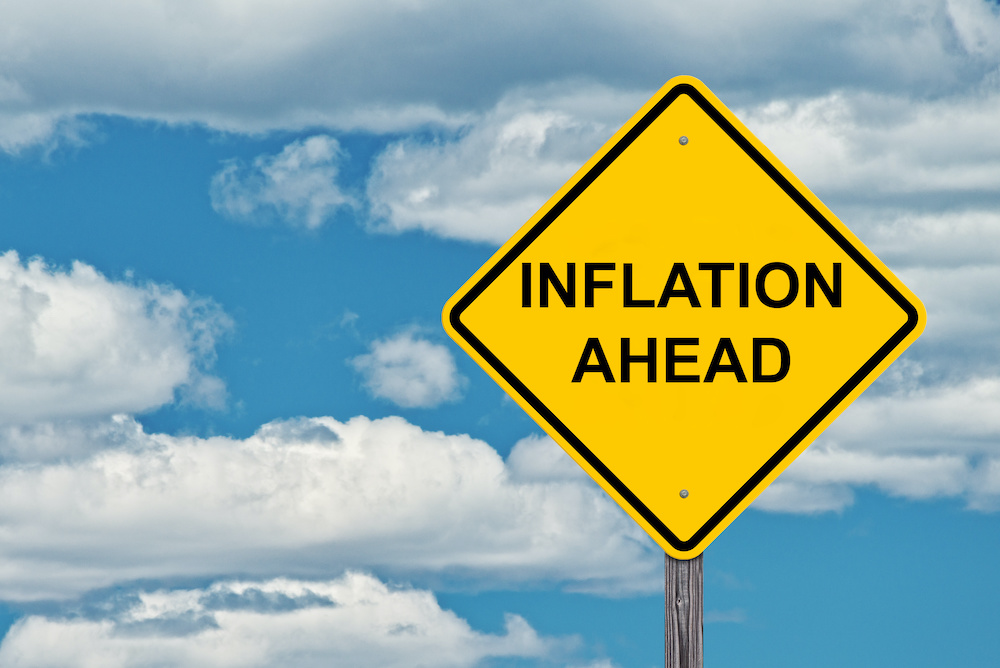A powerful economic recovery driven by the greatest government spending spree since World War II and working in tandem with monetary stimulus means inflation is coming. Three decades of disinflation where every cyclical peak in inflation has been lower than the preceding peak is ending. The question is when will inflation prospects force an increase in the record low 0.10% official cash rate?
The RBA’s view remains that the forces that would cause it to worry about higher inflation will not be evident before 2024 at earliest. Those forces are sufficient tightening in the labour market to cause annual wages growth that would support a sustained lift in the annual inflation rate towards the top-end of the 2 to 3 per cent target band and beyond.
Well before 2024 a temporary inflation blip will occur. Annual CPI inflation will lift from around 1% in Q1 2021 (data due later this month) to 3% or more in Q2 (data due late July).
This sharp lift in annual inflation in mid-2021 will be temporary, caused by what happened to CPI prices a year earlier when government initiatives during the pandemic forced down some key prices such as childcare costs. The result was that the CPI fell 1.9% q-o-q in Q2 2020. A year later, if the CPI rises at all in Q2 2021, at least two percentage points will add to the annual inflation rate compared with the result in Q1 2021.
Some of the government initiatives forcing down prices last year were confined to Q2 and their removal saw the CPI rebound +1.6% q-o-q in Q3 2020. The CPI in Q3 2021 will rise by much less than the 1.6% it rose in Q3 2020 causing the annual inflation rate to fall from the forecast Q2 2021 3%+ to 2% or less in Q3.
This rise and fall in annual inflation that will occur in Q2 and Q3 this year because of the influence of government policy initiatives is an example of temporary inflationary forces that the RBA will rightly ignore when setting the cash rate. The RBA will also ignore temporary price changes related to supply disruptions caused by the likes of flooding or interruptions to the supply chain of goods and services caused by local and international border closures.
The RBA also seems to be ignoring factors that may prove to be more permanent forces lifting annual inflation such as rapidly rising money supply (all measures ranging from cash to including deposits with financial institutions rising above 10% y-o-y and accelerating) and fast rising household take up of buy-now pay-later facilities effectively increasing household debt and enabling households to increase their purchases even while wages growth remains low.
The RBA is working on the premise that a sustained lift in inflation cannot occur ahead of a sustained lift in wages to say 4%+ y-o-y. The sustained lift in wages cannot occur until the labour market is tight marked by an unemployment rate of say 4% or lower. The RBA’s inflation premises are starting to look doubtful.
Disturbingly, there are signs from changes to payment methods that households can spend more and generate demand capable of lifting prices for an extended period without a lift in wages. It is possible that household demand enabled by changed payment (consumer credit) methods and fan-forced by fiscal and monetary stimulus cause a sustainable lift in inflation ahead of a lift in wages into what previously would have been considered inflationary territory.
In these circumstances, annual inflation could rise sustainably to 3% or more with the unemployment rate above 4%, even above 5% and annual wages growth below 4% or even below 3%. If the RBA waits for the unemployment rate to fall to 4% and annual wage growth to push above 4% before lifting the cash rate it will be left chasing a higher inflation rate long let out of the bag.
The lumps and bumps in the annual inflation rate during 2021 because of special factors may still provide cover for the RBA to stick with its guidance that inflation is a product of higher wages and therefore there is no cause to lift the cash rate before 2024. Beyond this year, the power of the economic recovery and increasing signs that higher inflation can occur ahead of higher wage growth may cause the RBA to reconsider its inflation view and cash rate guidance.
Whether inflation is returning sooner than the RBA expects currently or not, what is becoming certain is that the great disinflation era is over. Higher inflation is returning. If we are right, it could be from late-2022. Even on the RBA’s it is only higher wages that matters inflation view higher inflation arrives in 2024. Either way, the next move for the cash rate is upwards and possibly early in 2023 if we are right about the upward pressure building on inflation.

